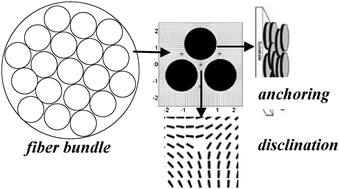A model for mesophase wetting thresholds of sheets, fibers and fiber bundles
Abstract
The ability of isotropic liquids to wet a substrate is a function of the geometry and curvature of the substrate surface, and generally wettability is higher for fiber bundles than for single fibers. The motivation of this work is to report on whether mesophases follow the same wettability sequence as isotropic liquids. Due to current interest in carbon fiber–mesophase carbon (cf/mc) composites applications we focus on carbonaceous mesophases that display a discotic nematic liquid crystal (DNLC) phase as a representative system for mesophase wetting in plane, curved and porous geometries. This paper presents a model based on the Landau-de Gennes (LdG) liquid crystal theory that leads to carbonaceous mesophases' wetting thresholds of carbon sheets, fibers, and fiber bundles under strong anchoring and uniaxial equilibrium nematic order. It is found that for typical material properties and fiber radii, from nano to micron ranges, the ability of carbonaceous mesophases to wet carbon substrates decreases from fiber bundles to sheets to single fibers. The critical Harking spreading parameter or wetting threshold for each geometry is expressed in terms of the isotropic wetting threshold times an amplification factor that encapsulates the resistance of


 Please wait while we load your content...
Please wait while we load your content...